On Wednesday morning, something remarkable happened. Lending Club filed this S-1 form with the SEC, their first official step towards having an IPO and becoming a public company that trades on the US stock market. The filing marks an historic moment for their company and peer to peer lending in general. What an exciting time this is.
A hundred media outlets immediately sprang to cover the IPO filing over the next few days, with the New York Times being first to break the story around 1:30pm EST. A key quote from their article was:
“Lending Club listed $500 million as a preliminary fund-raising target — but it could seek to raise even more, according to a person briefed on the matter. That initial goal would still be enough to rank the prospective public offering as one of the 10 biggest stock market debuts of an Internet company.”
What the Times is referring to is the section from the Lending Club S-1 form labeled Calculation of Registration Fee that states their “Proposed Maximum Aggregate Offering Price” as $500 million:

This number, a measurement for the IPOs size, is indeed remarkable, especially when held up against other companies that have gone public in the past.
Largest 10 US Internet IPOs (initial public offerings):
- Facebook – $16B (billion)
- Twitter – $2.1B
- Google – $1.92B
- Genuity – $1.91B
- Zynga – $1B
- Groupon – $805M (million)
- Vonage – $531M
- Orbitz – $510M
- Compuserve – $480M
- Savvis Communications – $408M (source: A, B, & C)
Not only is Lending Club likely to be the first public p2p lending platform, but they may go public in one of the largest IPOs for an internet company in American history. The New York Times piece continued on with this juicy detail:
“Anticipation over Lending Club’s impending I.P.O. had been so high that many of Wall Street’s biggest investment banks battled to claim a piece. The filing disclosed that the stock sale will be led by Morgan Stanley and Goldman Sachs.”
We have come a long way since the institution-empty days of 2010. Not only are major financial players no longer wary of Lending Club’s history and business model, they’re actually fighting each other over who gets to be involved with their success, with the winners being the most dominant financial firms in the country.
Bloomberg reflected on the IPO as well, and had this to say:
“The peer-to-peer lender’s valuation reached almost $3.8 billion in April, a 63 percent jump from November, people familiar with the matter said then. At that level, LendingClub’s market value would be higher than 97 percent of banks listed on U.S. exchanges.”
On a similar note, the London-based Financial Times concluded that Lending Club is “likely to seek a valuation of about $5 billion” (source; emphasis mine).
In summary, Lending Club has officially filed to become a public company. Their paperwork shows that they intend to make history in 2014: a $500 million IPO and $5 billion valuation would be an enormous national headline, and could further position Lending Club as a prospective staple of American society. As Peter Renton has said, “Lending Club is positioning itself not just as an online platform but as the financial services company of the 21st century.”
Before Lending Club Joins the Stock Market: a Checklist
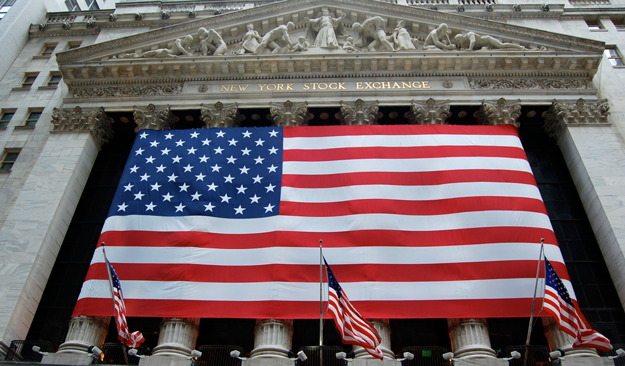
The company has now gone into a “quiet period” where they are forbidden to promote their IPO (read: Google IPO and Playboy interview). As outlined in this Quora Q&A (hat tip to Bo Brustkern), there are a few short steps remaining in the process before Lending Club gets a ticker symbol.
- The SEC begins an exam of Lending Club and their S-1, and will send back a list of detailed comments. This can take 30 days.
- The company and the SEC then go back and forth with responses and further comments until everything is kosher. This may take 2-3 weeks, but can take longer if things get bogged down.
- As this completes, Lending Club goes on a two-week roadshow (Wikipedia) where they travel the country, meeting with institutions and inviting them to take on a long-term stake in the company.
- If they feel they have garnered $500 million worth of interest and the US stock market conditions are favorable (versus this IPO story from WSJ), then barring any unforeseen issues the stock’s price will be announced and it will open for trading on either the NYSE or NASDAQ (my guess: the NYSE).
Lending Club is set for a mid-November IPO
The entire process often takes 10-12 weeks, which would position the IPO to happen between the 6th and 20th of November. This date jives with a confidential source of CNBC’s Ari Levy that said:
“If the stock market behaves, LendingClub plans to go public before the Thanksgiving holiday in late November.” Lending Club IPO to reward Silicon Valley approach
There are a number of issues that could complicate things. First and foremost, Lending Club is trail-blazing a brand new industry, so the SEC may take extra steps to ensure everything is in order, which could mean a longer regulatory dialog. Additionally, there are a variety of assorted variables that all have to line up for this to happen. An IPO is sort of like a wedding where a hundred parties attempt to unify around one date on the calendar. If bad press or a Thanksgiving holiday gets in the way, things can get delayed.
Since Lending Club is a harbinger for future peer to peer IPOs, Prosper being next, I imagine there will be a more intentional dialog with the SEC. That said, I do not really foresee any major setbacks. Even as a private company, Lending Club has been working with the SEC for years; they have already been publicly transparent for a long time. In my eyes, the major issues were put to rest years ago, so a smooth IPO should indeed happen in mid-November.
What this Means for the United States
This IPO could mean very little or a great deal to the country at large. On the one hand, another big-dollar Silicon Valley company having an IPO and trading on the stock market does not typically affect the lives of most people. Dozens of major press outlets gushing with all this “$500 million”-laden vernacular can make it seem like we just discovered the cure for cancer, when in actuality, life a year from now will look pretty much the same as it does today.
Of the two things Wall Street is good at, one is getting the media to clap in unison and make things meaningful when, in fact, they aren’t. That said, the other thing Wall Street does quite well is provide a national stage that can spotlight amazing companies and reward them for their hard work and ingenuity.
Lending Club is one of these amazing companies. Launching in May of 2007, it took them five years to figure out their model and reach $1 billion in issued loans. In comparison, the company today is issuing over $1 billion in loans every three months:
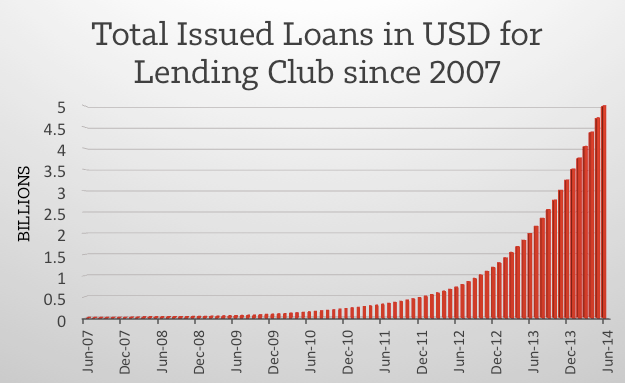
This growth is at just a fraction of where it could eventually go. The Wall Street Journal said that this current total of $5 billion issued loans is just 1.3% of what’s possible:
“Lending Club cites the size of the overall consumer credit market at $3.2 trillion in the filing and said that roughly $380 billion of that would qualify under its relatively stringent qualifications for borrowers.” Lending Club: A Look Inside its IPO Filing – WSJ.com
In this way, an IPO on Wall Street is a moment for Lending Club to shine, highlighting the hard work and thoughtful product that has been created by Renaud Laplanche and his team. It is a huge opportunity for the entire country to discover peer to peer lending for the first time. Large scale lending of money through the internet is an inexorable future way of life for our country, and Wall Street is one of the avenues this innovation must pass through to make that transformation complete.
In my favorite section of the S-1 filing, Laplanche wrote a letter where he explained the heart of his company and why this is all possible. The best paragraph of this letter, titled It Feels Good to Share, is printed in full below:
“The sharing economy that emerged after the 2008 financial crisis was initially motivated by financial considerations and the economic efficiency derived from putting underutilized assets to better use. I believe the sharing economy has now given birth to a socially desirable way of life that is gaining ground in every aspect of our lives from transportation and hospitality to financial transactions, with money being one of the most underutilized assets. I believe the reason our users choose Lending Club goes beyond the desire to obtain a better deal or a better experience than they’re getting from their bank. There is strong satisfaction in investing in people and having them invest in you.”
This, I think, is the foundational driver of Lending Club’s success. Lower interest rates and solid returns are a natural extension of the good relationship that forms when we directly connect those of us who need a loan to those of us who have extra to lend.
3 Ways an IPO Helps Lending Club as a Company
There are a number of big ways this IPO benefits the company. In his June interview with LendingMemo, Laplanche stated the big three as:
- National attention
- Shareholder liquidity
- An influx of capital
In our interview, Laplanche emphasized the publicity element as the sole reason Lending Club seeks an IPO:
A successful IPO can be a significant awareness-creation event. Millions of people who haven’t heard of us before could discover Lending Club if we would go public, both on the borrower and investor side of things.
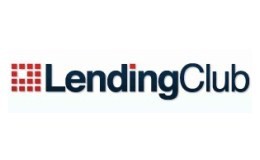 This is worth reemphasizing. The fact remains that the majority of Americans have never heard of Lending Club, and a foot-stomping confetti-raining moment at the center of American finance would go miles in helping that situation. As Lending Club is referenced over and over in national media, more and more people will choose to borrow and invest through their platform.
This is worth reemphasizing. The fact remains that the majority of Americans have never heard of Lending Club, and a foot-stomping confetti-raining moment at the center of American finance would go miles in helping that situation. As Lending Club is referenced over and over in national media, more and more people will choose to borrow and invest through their platform.
However, I think the other two reasons are helpful to Lending Club as well. Speaking towards shareholder liquidity, I would not count this one out. There may still be a number of their earliest investors who want to have an exit. Secondly, Lending Club may not critically need a $500 million bag of cash, but it would enable them to do some creative things in the coming year. They could purchase another company. They could buy a Superbowl ad. They could mail a bar of chocolate to every household in America that says, “What tastes better than chocolate? Being debt free.” After all, this is more than the $392m they have raised in the entire history of their company (Crunchbase).
3 Ways an IPO Helps Peer to Peer Investors
This IPO offers a number of huge benefits to all of us who invest in peer to peer loans:
- The blue sky exemption
- A better investment
- A better investing process
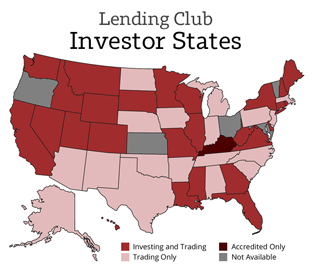 As stated previously, going public as a company would open up the remaining 23 states in the US that do not allow investing at Lending Club. This includes enormous concentrations of the country, like the states of Texas and Ohio. An IPO would mean that Lending Club needs solely federal approval to operate nationwide; fickle state regulators in Ohio would no longer have any say. Millions of Americans, including my parents in Michigan, could finally become Lending Club investors.
As stated previously, going public as a company would open up the remaining 23 states in the US that do not allow investing at Lending Club. This includes enormous concentrations of the country, like the states of Texas and Ohio. An IPO would mean that Lending Club needs solely federal approval to operate nationwide; fickle state regulators in Ohio would no longer have any say. Millions of Americans, including my parents in Michigan, could finally become Lending Club investors.
Secondly, an IPO would make Lending Club a better investment. One of the risks around Lending Club, as previously highlighted at LendingMemo, is that a platform could go bankrupt. Investors would surely be impacted by such an event, though how badly is debatable. An IPO would further bolster the future of this company and push the possibility of a bankruptcy even further away than it already is.
Finally, a Lending Club IPO could result in a better investing experience. With $500 million in cash, Lending Club could further improve its website’s architecture and design to make investing an easier and more pleasurable experience.
The Future of Everyday Finance is Bright
This has been a huge week for peer to peer lending. The name of our largest platform has been splashed across a hundred major news outlets. The most prominent voices in the US are hailing Lending Club as one of our nation’s brightest points of innovation and progress. The shareable economy continues on in its unstoppable descent, this time in a company that directly connects the nation’s debt to its investing.
What happens next is both uncertain and very exciting. Will the SEC give Lending Club the green light? Will Wall Street see them as a company worthy to buy-and-hold? Will Lending Club’s IPO finally make the country sit up and pay attention to this wonderful way to invest and borrow money from one another?
I believe it will. Person to person lending is a natural extension of the phenomenon that is already happening throughout the world, where technology is patiently superseding the inefficient brick and mortar of the past. Lending Club going public in November would simply be a moment where that wider transformation suddenly concentrates and becomes very obvious.
[image credit: Dan McKay “New York Stock Exchange” CC-BY 2.0]
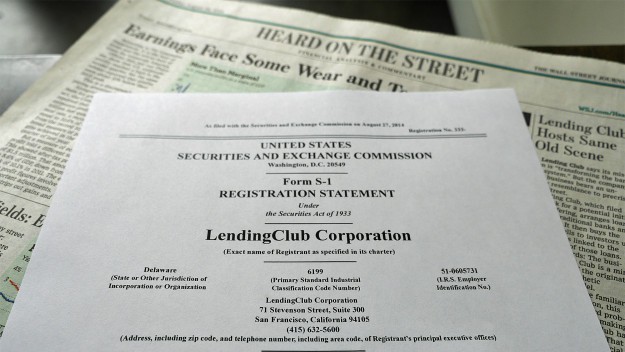
Simon,
You mention that with the Blue Sky Exemption, “fickle state regulators” would no longer have a say; as Lending Club would only need Federal approval after going public. Would that also mean that in states where they have “Financial Suitability Requirements”, those requirements would no longer be in effect? Or would the “Financial Suitability Requirements” stay in place despite the Blue Sky Exemption?
Hi Job. Read this: http://www.lendacademy.com/lending-club-ipo-legal-drama/
So… we don’t really know yet. Lol! Thanks for the article!
True. It’s uncertain, but I would say it’s also very likely.
Hi Simon- do you know what the lock up period will be on the Lending Club stock? That is the period of time when pre-IPO insiders are prohibited from dumping their shares, after which they sell and the stock usually drops.
If past posture is any indication, Lending Club will probably go with whatever approach is standard.
Geoff,
The lockup period is 180 days per prospectus
I guess Thanksgiving did get in the way….what are the odds of getting an opening before Xmas?